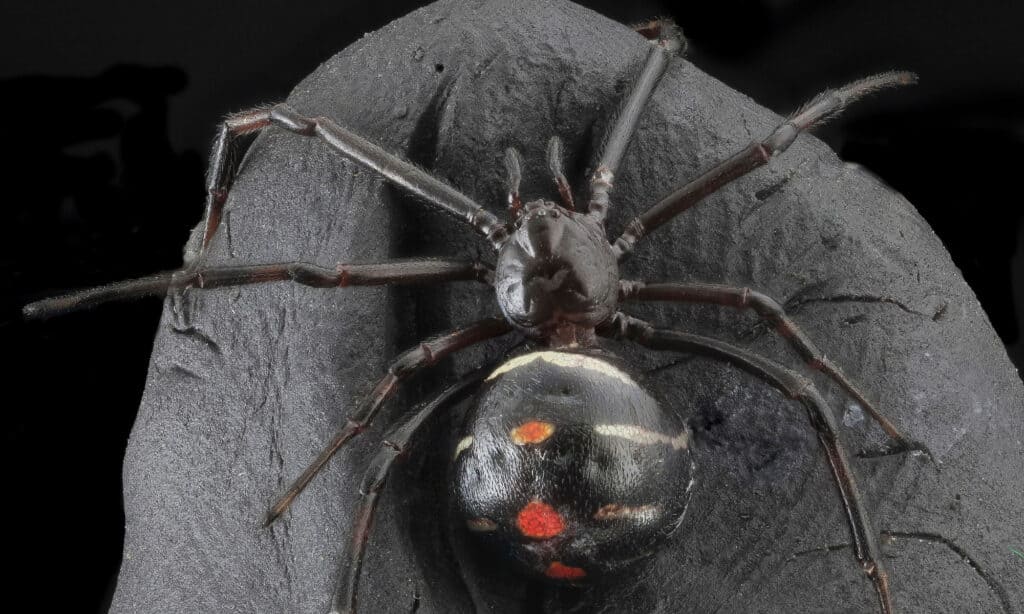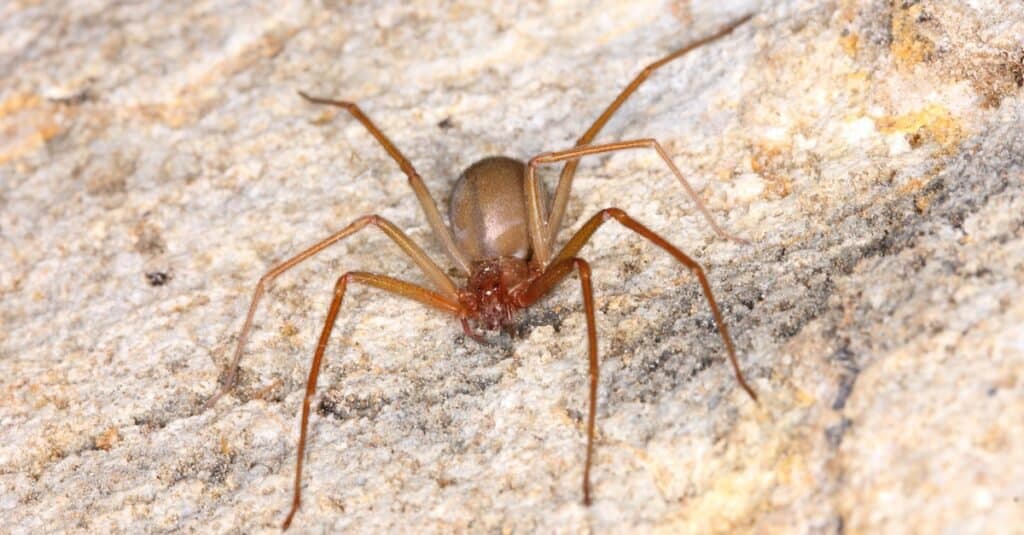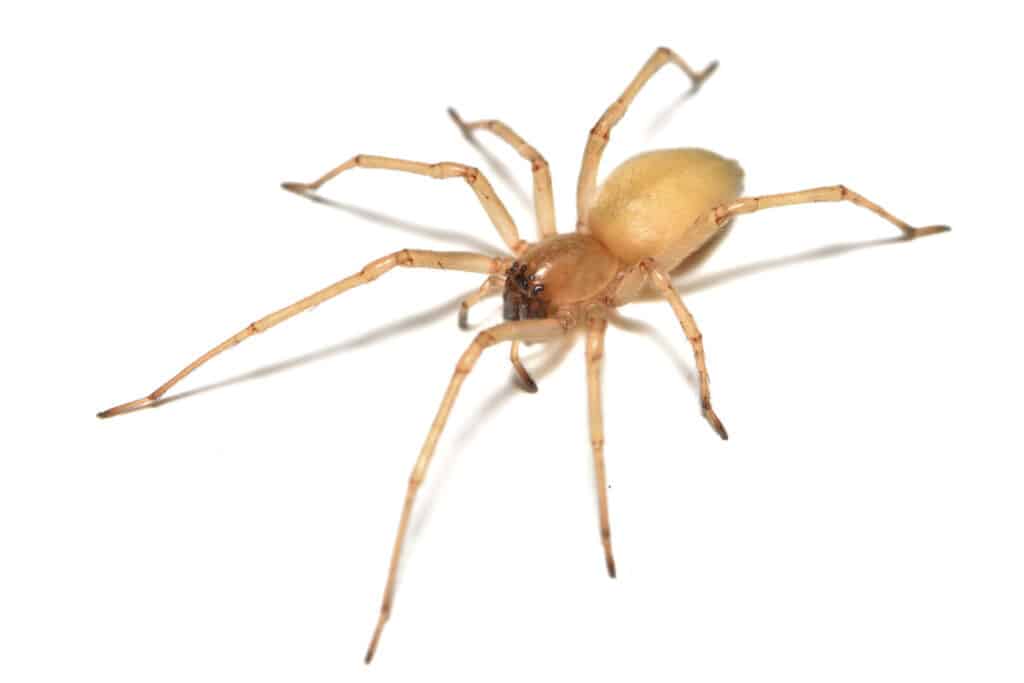Summer is when people in Wisconsin finally thaw out from brisk spring and start spending a lot of time outside. Whether you are going hiking, camping, or fishing, you’re bound to run into some of Wisconsin’s wildlife. Although they are a fair bit smaller than the animals that would concern most people, you should be aware of the most dangerous spiders in Wisconsin.
Today, we’re going to show you three spiders that you need to know about. We’ll show you what they look like, where you’re like to encounter them, and what they can do if they bite you. That way, you’re prepared if you meet one of them. Also, you’ll have a good idea about which spiders are not threatening to you at all.

What Are Wisconsin’s Most Dangerous Spiders?
Before we get started, we have to figure out what makes a spider bite dangerous. In most cases, it’s not the physical damage from the bite. Most of the spiders in the U.S. have fangs too small to do structural damage.
Thus, we need to worry more about the venom that accompanies bites. Remember, just about every spider has venom. Very few spiders can significantly harm a human being unless they have an allergy to their venom. Still, a few spiders have venom that is strong enough to cause serious harm to people even without an allergy.
Those are the spiders that we have to worry about. Their venom can either cause necrotizing wounds or attack your nervous system. Necrotizing wounds can be dangerous because they can become severely infected. Damage to the nervous system can be outright fatal in rare cases. Either way, you need to know which spiders have the power to injure humans in this way.
Without further ado, we’re going to explore three of Wisconsin’s most dangerous spiders.
1. Northern Black Widow

Unlike other black widows, northern black widows have a broken hourglass-shaped marking on their abdomens
©Porco_Rosso/Shutterstock.com
The northern black widow is native to Wisconsin, but the spider is rarely seen. These spiders are so rare that most people never see them throughout their entire lives. They have been found in less than half of the counties in the state, most of them in the eastern and central areas.
Adult female black widows are the most dangerous. Male black widows and juveniles look different than female black widows. Also, males and juveniles either do not bite or cannot bite human beings.
The northern black widow has distinct looks from the southern variant. While the spider’s body is usually black and shiny, it may also have red colorations on its legs. This spider has red spots on the middle of its dorsal abdomen, and it has red bars on its underside. These colors may vary, though, with yellow or white markings replacing the red!
Adult female southern black widows have an entirely black and shiny body with relatively short black legs. Also, the spider has a red marking or a red hourglass-shaped marking on the underside of its abdomen.
You’ll find black widows in many habitats including grasslands, forests, and even suburban and urban areas. They can come into contact with people that are out in the wilderness hiking or camping, or they can find their way into your basement or garage. You probably won’t find one in the main part of your home, though. They are most active at night, and they would rather flee than bite.
What Does a Black Widow’s Bite Do?
The black widow’s venom makes them one of Wisconsin’s most dangerous spiders. Their venom is neurotoxic, so it affects your nervous system. Most people that are bitten experience pain, redness, and swelling where the bite occurred.
People who are severely affected will experience muscle cramps, difficulty breathing, weakness in the body, sweating, a rash or severe itch, nausea, and vomiting. If you experience serious symptoms of a bite, go to the emergency room. If you suspect a spider of biting a child or elderly person, take them to the ER right away without waiting for symptoms to develop because they can actually die from a bite.
Remember, most people don’t realize they were bitten at first. People rarely see a spider once it bites them.
2. Brown Recluse

The brown recluse spider is one of the most dangerous spiders in the United States. Its venom destroys the walls of blood vessels near the site of the bite, sometimes causing a large skin ulcer.
©Pong Wira/Shutterstock.com
The brown recluse is not native to Wisconsin, but it has turned up from time to time. The brown recluse is incredibly rare, but since it has been seen, we’re going to talk about it.
These spiders are small and tan or brown. They have a violin-shaped marking on their carapace. They most often live in wooded areas, but they can get inside homes where they can often nest in or around cardboard boxes in dark areas like basements, attics, and cupboards. These spiders will go out of their way to avoid people and will only bite if they feel trapped.
The bite from a brown recluse introduces a venom that causes a necrotic wound that kills off the tissue in the area the bite occurred. The bite usually becomes noticeable after a blister forms. Typically, these blisters are purple and indicate that necrosis has started.
Over ensuing days, a scab forms where the blister was and then falls off. An ulcer is left that should be looked at by a medical professional to ensure it heals properly. These wounds can become infected, complicating the healing process. However, only around 10 percent of brown recluse bites become severe, and they are not usually fatal.
3. Northern Yellow Sac Spider

The northern
yellow sac spider
only bites when it is threatened
©Tobias Hauke/Shutterstock.com
The northern yellow sac spider is present in Wisconsin. These spiders are usually yellowish brown or cream-colored with a cream-colored, tan, or yellow abdomen. Their bites are not as serious as those issued by a black widow or a brown recluse. However, they are often confused with the latter.
A northern yellow sac spider will usually only bite a person when they are trapped against a person’s body. That could happen if the spider was hiding in a jacket and a person put that jacket on. Typically, the bite will feel somewhat painful immediately. Then, symptoms such as redness, burning, and swelling set in.
On occasion, the bite can make a person tired, experience cramps, and produce a fever. The victim could also develop a rash and blisters over the next 10 hours. Although it’s less severe than the brown recluse, the bite from a yellow sac spider may produce a lesion that is similarly necrotic. Although it’s a rare occurrence, you’ll need medical attention to ensure the area doesn’t become infected.
We’ve now covered Wisconsin’s most dangerous spiders in some depth. Bites from these spiders are rare, and they are usually not overly harmful. However, you need to know what you’re up against and where you’re most likely to see these creatures. If you believe that one of them has infested your home or an outbuilding, make sure you seek professional aid in getting rid of the arachnids.
Summary of 3 Most Dangerous Spiders in Wisconsin
| Spider | Venom | |
|---|---|---|
| 1 | Northern Black Widow | Neurotoxic venom can cause pain, redness, and swelling; worse symptoms are muscle cramps, difficulty breathing, body weakness, sweating, a rash or severe itch, nausea, and vomiting |
| 2 | Brown Recluse | Venom causes a necrotic wound that kills off the tissue in the area the bite occurred |
| 3 | Northern Yellow Sac Spider | Venom causes a necrotic wound that kills off the tissue in the area where the bite occurred |
Bonus: What Keeps Spiders Away?

Spiders find certain essential oil scents repugnant like peppermint oil.
©Tatevosian Yana/Shutterstock.com
One of a person’s worst nightmares is having spiders wind up in their home–especially the poisonous kind! The best way to avoid getting bitten by a spider is to try and prevent them from entering your house in the first place. As spiders can get into your home through holes and cracks, you can check for possible entryways with a flashlight. If the light gets through from the inside to the outside, you should fill that hole or crevice with an appropriate product.
Keeping your yard free of debris and overgrown vegetation helps cut down on areas spiders would gravitate to. Caulking doors and windows is also a good strategy to keep them out.
Spiders hate certain scents, so scented essential oils can help deter them like peppermint, tea-tree, lavender, and rose. You can add 15-20 drops of a particular oil in a water bottle mixed with water and spritz it around your house. They also hate the smell of cinnamon and vinegar, so these scents can be used similarly.
Regular cleaning inside your home, especially in areas that are dark or less frequented, is necessary to keep spiders from setting up residence. It’s also important to keep an eye on fruit bowls, as they can attract spiders.
The photo featured at the top of this post is © Physics_joe/Shutterstock.com
Sources
- UC Riverside Spider Research, Available here: https://spiders.ucr.edu/causes-necrotic-wounds-other-brs-bites
- UW Madison Deaprtment of Entomology, Available here: https://insectlab.russell.wisc.edu/2018/05/22/black-widows-2017/
- Web MD, Available here: https://www.webmd.com/skin-problems-and-treatments/black-widow-spider-bite
- Washington State University, Available here: https://entomology.wsu.edu/outreach/bug-info/yellow-sac-spider/
Thank you for reading! Have some feedback for us? Contact the AZ Animals editorial team.






